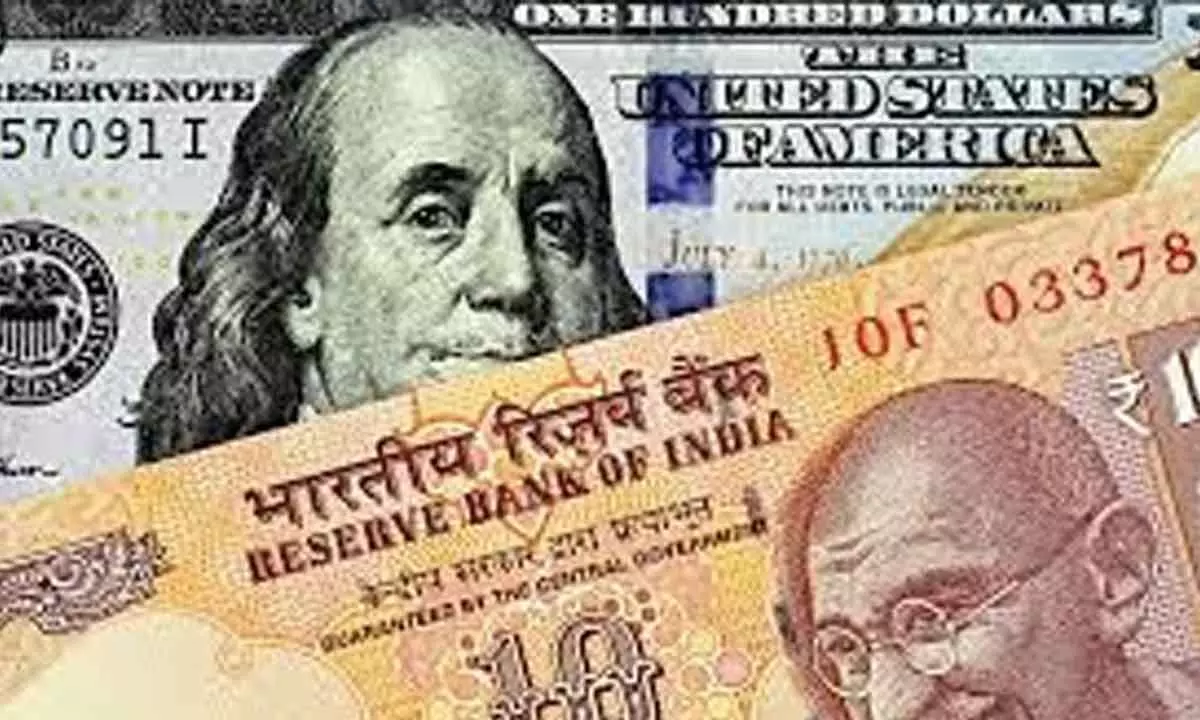Why is the dollar still going strong when US inflation outpaces India?
The US is in the grip of its worst bout of elevated inflation and at 9.1 percent in June, the pace outstripped that of many emerging-market economies, including India.
image for illustrative purpose

The US is in the grip of its worst bout of elevated inflation and at 9.1 percent in June, the pace outstripped that of many emerging-market economies, including India.
High inflation has traditionally been thought to be a problem of emerging markets, given the strong underlying demand that's characteristic of a growing economy.
After two shocks, the COVID-19 pandemic followed by the Russia-Ukraine war, inflation as a phenomenon has entered uncharted territory. Supply shortages, unmet demand and too much money chasing too few goods are now an advanced-economy problem as well.
The outcome of elevated inflation is erosion in the value of an economy's exchange rate. If a country's inflation is higher relative to its trading partners', its currency has to adjust down. Then what explains the US dollar's supremacy at all times?
Be it the inflation trade, wherein the bets are for an elevated cost of borrowing, or the recession trade, wherein investors bet on interest rates coming down due to economic contraction, the dollar wins on both arguments.
At the heart of this is the belief that any adverse developments in the US economy would hurt other countries more than the US itself.
Too much money chasing too few goods results in inflation. The US Federal Reserve's responses to a crisis result in a glut of dollars as it loosens its monetary policy.
It is then no surprise that the crisis responses of the Fed that floods the market with dollars eventually drives up the prices of everything in the US economy. Inflation has followed the Fed's period of loose monetary policy every time. Recall that former Fed chief Alan Greenspan's generous policies handed his successor Ben Bernanke a tough inflation challenge.
But none of the previous inflationary bouts in the US has matched the current one in intensity. The difference between inflation this time and in the past has been a geopolitical shock and the pandemic.
Russia's war on Ukraine affected the supply of crude oil given that the former is one of the top exporters of petroleum products and gas. The war came on the back of supply chain disruptions caused by COVID-19 which had already driven up prices of most commodities globally. Global inflation has surged and almost every country is facing a sharp rise in prices.
Inflation far in excess of the Fed's mandate of 2 percent is a crisis which has prompted the central bank to shed its balance sheet and hike policy rates faster than expected.
The Fed's withdrawal has put an end to the dollar glut and made the dollar a rarer-than-before currency. An increase in policy rates mean that dollar assets, the safest in the world, will offer superior returns. What this does is reduce the appeal of emerging market assets as the interest rate differential narrows.
That brings us to emerging economies such as India. Domestic inflation in India has been elevated with the Consumer Price Index in June accelerating 7.01 percent. For an emerging market such as India, elevated inflation is a recurring problem because demand at most times outstrips supply of goods and services.
But external shocks, especially from oil prices, has worsened it. India's central bank has hiked its benchmark policy rate by 90 basis points (bps). This falls short against the Fed's 150 bps hike. One bp is one-hundredth of a percentage point.
Future rate hikes by the Fed would likely be more than those by the Reserve Bank of India (RBI). The result is that dollar assets become more appealing. The difference between benchmark US rates and India's policy rates is narrowing fast, eroding the appeal of rupee assets. That makes the dollar win.
But the Fed's rate hikes are expected to push the US into recession. Surely if the economy is not doing well, the dollar has to fall?
The recession trade
For the past several months, global markets have pivoted towards the belief that a recession is imminent in the US, owing to the Fed's aggressive rate hikes. In fact, some believe a recession is already underway.
The outcome of a recession is a rise in unemployment and reduction in investments. In the current scenario, the US unemployment rate is 3.6 percent and labour markets are tight. Yet, the US Gross Domestic Product may contract.
The upshot is that the US will reduce its consumption, a big chunk of which comes from emerging markets. The US is the biggest market for Indian exports and a recession there hits export growth hard. Therefore, a recession is not debilitating for the US but it is a big mess for emerging economies as they lose their biggest export market. This would have an adverse effect on their growth. For India, exports have contributed more than a quarter of economic growth.
A recession in the US therefore hits emerging economies harder than the US economy itself. This leads to the dollar being a safe-haven currency during turbulent times.
"The dollar is our currency, but your problem." The US treasury secretary during the Nixon administration wouldn't have known that he explained the world's exchange rate fabric accurately in that sentence. To this day, the US currency remains a problem for the world.

